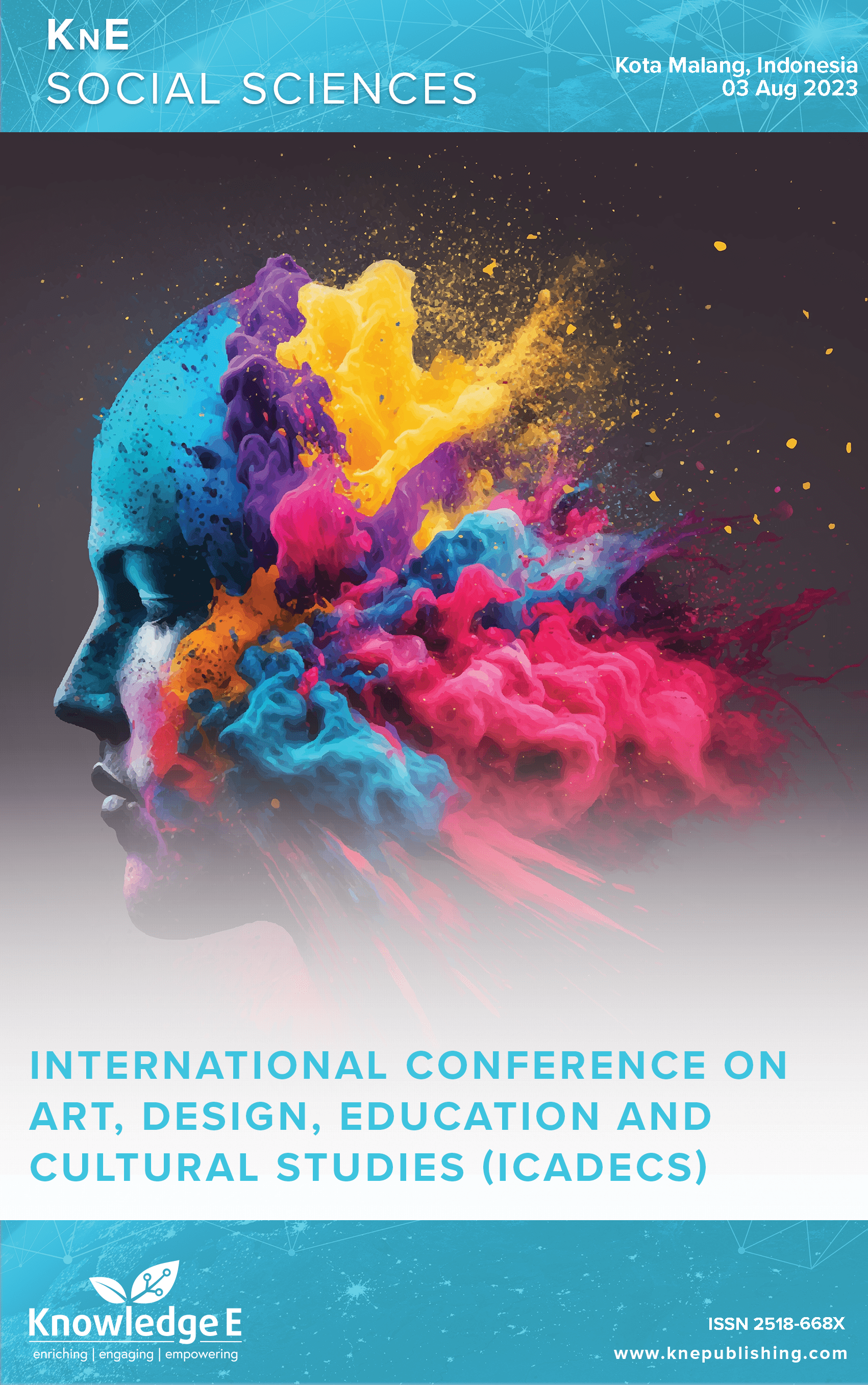The Analysis of the Implicature and Pragmatics Force of the Carving Ornaments of the Mantingan Mosque, Jepara, and Their Acculturation to Surrounding Communities
DOI:
https://doi.org/10.18502/kss.v9i15.16213Abstract
The Masjid Mantingan, the second-oldest mosque after the Masjid Agung Demak, is located in Mantingan village, Tahunan subdistrict, Jepara Regency. The Masjid Mantingan was established in 1481 Saka or 1559 AD by Sultan Hadlirin, the spouse of Queen Kalinyamat. There are white stone carvings in the mosque that result from the influence of Hindu, Buddhist, Chinese, and Islamic cultures and have artistic value. This case study aimed to examine the implicatures and pragmatic forces of the carved ornaments on the interior walls of the Masjid Mantingan. Data were collected through observation and interviews with the administrators, visitors, traders, and the community surrounding the mosque. The data was then analyzed using contextual analysis. The study’s findings demonstrated that, pragmatically, the Masjid Mantingan construction prioritizes functional components over aesthetic ones, as demonstrated by the mosque’s use as a place of prayer, education, tourism, business, and socio-culture. The mosque was also constructed by emphasizing elements of implicature and pragmatics force, as evidenced by the use of ornaments drawn simultaneously from three different cultures, namely Islamic, Hindu, and Javanese. Cultural acculturation at the mosque also contributes to the development of socio-cultural aspects and the economics of the local community by preserving traditions, maintaining carved ornaments, and engaging in tourism activities. The Masjid Mantingan, as the precursor to the development of Islam in Jepara, is also able to adapt to become a historical, cultural, and religious edifice, a symbol of glory, and a symbol of tolerance among religious communities.
Keywords: Masjid Mantingan Jepara, implicature of carving ornaments, pragmatics force of carving ornaments
References
Saifullah. Islamic history and culture in Southeast Asia (in Bahasa Indonesia). Yogyakarta: Pustaka Pelajar; 2010.
Geertz C. Islam that I observe in Morocco and Indonesia (in Bahasa Indonesia). Jakarta: Yayasan Ilmu-Ilmu Sosial; 1982.
Triyanto T, Mujiyono M, Sugiarto E, Pratiwinindya RA. Menara Kudus Mosque: Reflection on the value of multicultural education in the culture of coastal communities (in Bahasa Indonesia). Imajinasi. Jurnal Seni. 2019;13(1):69–76.
Syah M. Islamic acculturation and local culture historical study of the history of Islamic Da’wah in the Rejang Region (in Bahasa Indonesia). Journal of Da’wah and Communication. 2016;1(1):21–43.
Indrahti S. Kudus and Islam: Local cultural values and the pilgrimage tourism industry (in Bahasa Indonesia), Semarang: CV. Madina; 2012.
Kassim N, Abdullah N, Taib ZB. Decoration in praying hall of mosque: A review of current literature. Procedia Soc Behav Sci. 2014;153:55–60. DOI: https://doi.org/10.1016/j.sbspro.2014.10.040
Halimah H, Iqbal M. Improving function through mosque administration reform at the Baiturrahman Banda Aceh Mosque. Budapest International Research and Critics in Linguistics and Education (BirLE) Journal. 2019;2(4):191–4. DOI: https://doi.org/10.33258/birle.v2i4.507
Idham NC. Javanese Islamic architecture: Adoption and adaptation of Javanese and Hindu-Buddhist cultures in Indonesia. J Archit Urban. 2021;45(1):9–18.
Hidayat RA. Mosques as preservers of tradition (in Bahasa Indonesia). Analisa. 2011;18(2):229–46. DOI: https://doi.org/10.18784/analisa.v18i2.135
Moghavvemi S, Sulaiman A, Taha AZ, Abd Sukor ME, Mustapha MZ, Mohtar M, et al. Factors contributing to mosque tourism in Malaysia. In Enhancing Halal Sustainability: Selected Papers from the 4th International Halal Conference; 2019. pp. 77–86. DOI: https://doi.org/10.1007/978-981-33-4854-7_7
Kessler K. Conceptualizing mosque tourism: A central feature of Islamic and religious tourism. International Journal of Religious Tourism and Pilgrimage. 2015;3(2):11–32.
Navajas-Romero V, Hernández-Rojas RD, Hidalgo-Fernández A, Jimber Del Rio JA. Tourist loyalty and mosque tourism: The case of the Mosque-Cathedral in Córdoba (Spain). PLoS One. 2020 Dec;15(12):1–21. DOI: https://doi.org/10.1371/journal.pone.0242866
Aspers P, Corte U. What is qualitative in qualitative research. Qual Sociol. 2019;42(2):139–60. DOI: https://doi.org/10.1007/s11133-019-9413-7
Supriyadi S. Indonesian caricature discourse: A pragmatic study perspective (in Bahasa Indonesia). Kerja sama UPT Penerbitan dan Percetakan UNS (UNS Press) dan Lembaga Pengembangan Pendidikan (LPP). Universitas Sebelas Maret; 2011.
Subroto E. Introduction to structural research methods (in Bahasa Indonesia). UNS Press; 1992.
Subroto E. Semantik Leksikal (in Bahasa Indonesia). UNS Press; 1988.
Muslim AR. Examining the philosophical meaning of carvings of the Astana Sultan Hadlirin Mosque as an Islamization process in Mantingan Village, Tahunan District, Jepara Regency (in Bahasa Indonesia). Doctoral Dissertation, IAIN KUDUS; 2022.
Muhajarah K. Various intelligence theories, thinking processes and their implications for learning Islamic religious education (in Bahasa Indonesia). Jurnal Pendidikan, Sains Sosial, dan Agama. 2022;8(1):116-27. DOI: https://doi.org/10.53565/pssa.v8i1.442
Idham NC. Javanese Islamic architecture: adoption and adaptation of Javanese and Hindu-Buddhist cultures in Indonesia. J Archit Urban. 2021;45(1):9–18. DOI: https://doi.org/10.3846/jau.2021.13709
Rosyid M. Hinduism and Islamic ornaments in Langgar Dalem Mosque of Kudus. Journal of Islamic Architecture. 2022;7(1):135–47. DOI: https://doi.org/10.18860/jia.v7i1.12999
Supriyadi S, Prameswari NS, Widiyastuti E, Athian MR. Hindu culture at the Menara Kudus Mosque, Indonesia and its influence on society. ISVS e-Journal. 2022;9(4):31– 55.

